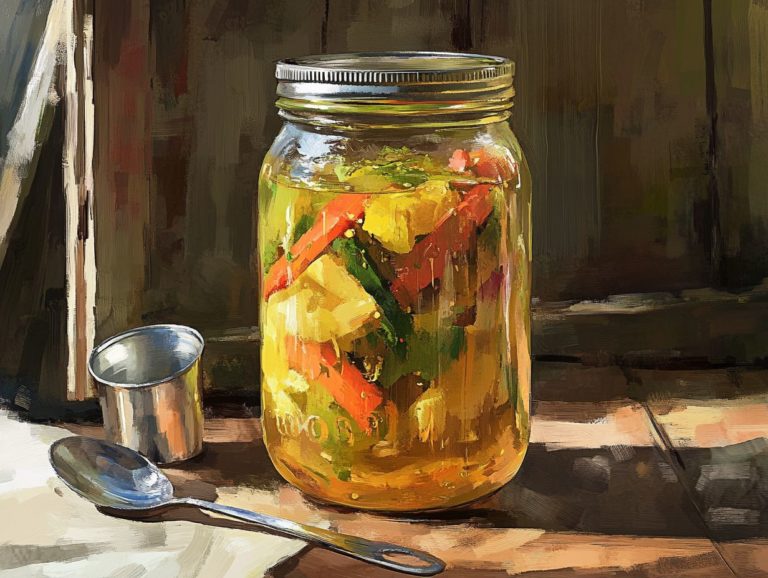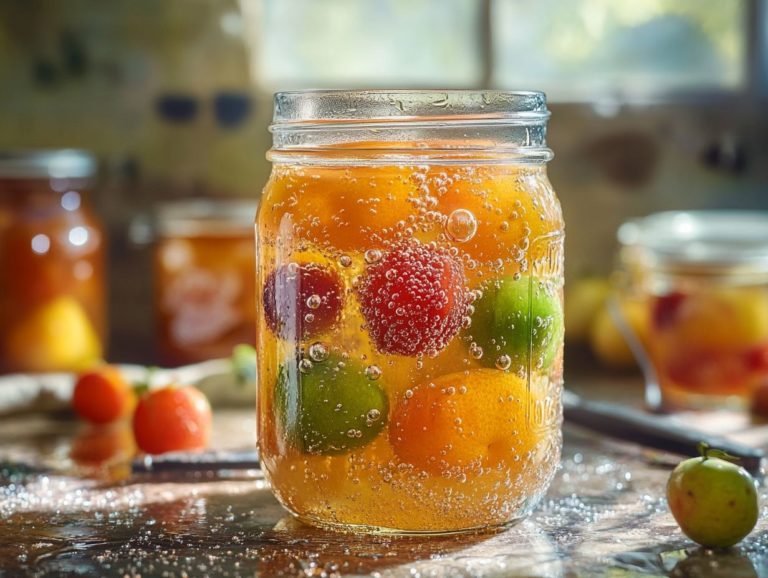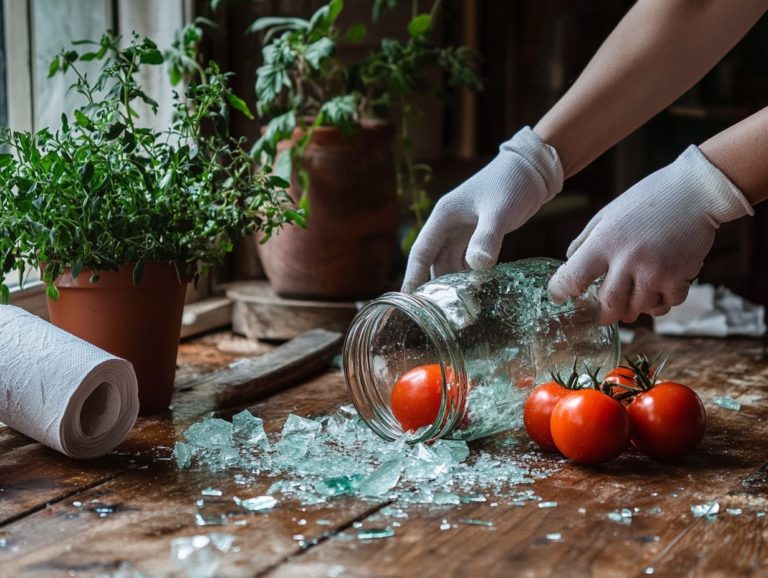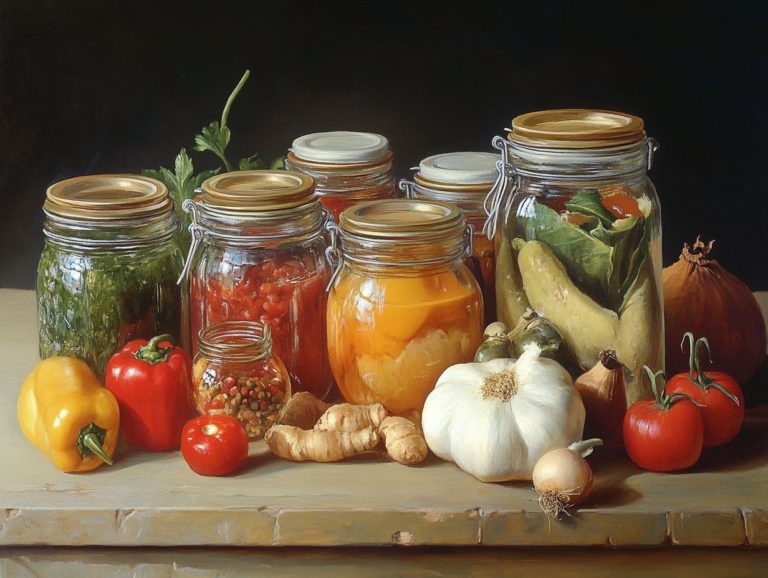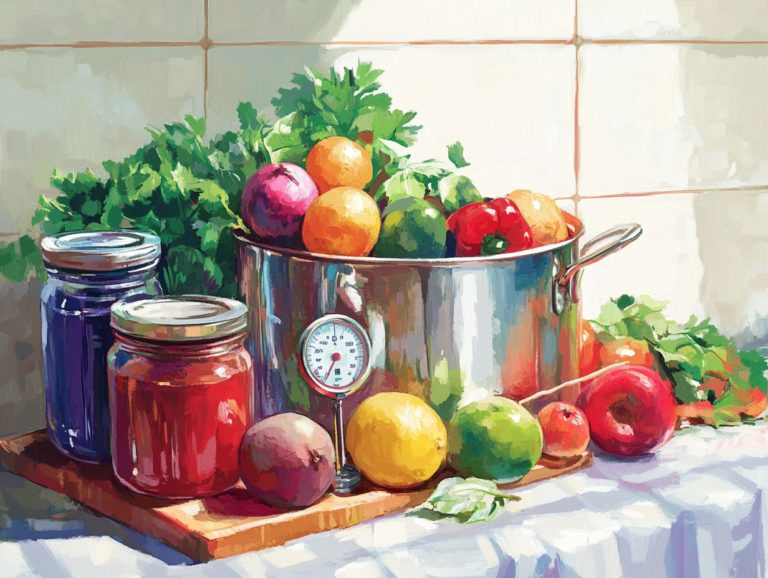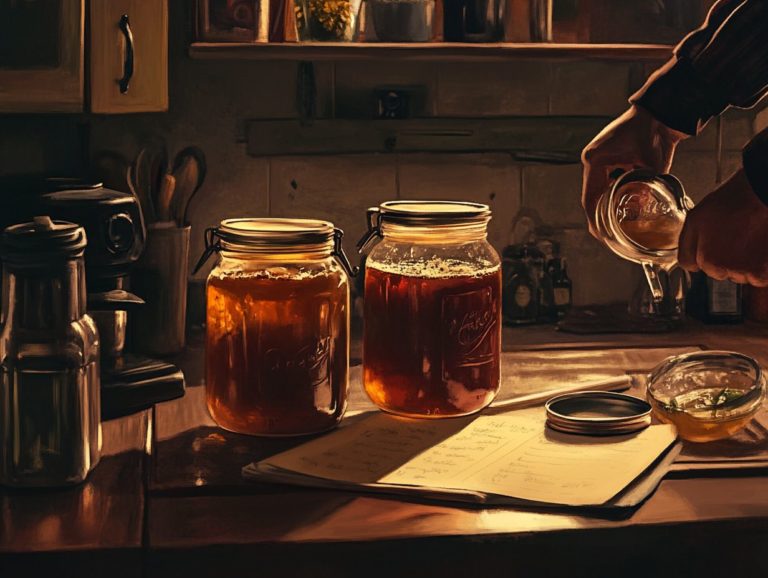What to Check When Jars Don’t Seal
Sealing jars can be a deeply rewarding experience. However, it can also bring a touch of frustration especially when you find that your meticulously prepared jars haven t sealed as they should, leading to potential food safety concerns.
Understanding why jars don t seal is key. This knowledge can save your food. Let s dive into the key issues that cause sealing failures, presenting you with a step-by-step method for achieving proper seals, along with troubleshooting tips that will ensure your jars remain securely closed and safe for food storage.
Preventive measures help you achieve consistent success each time you embark on this culinary endeavor, making your canning experience more enjoyable.
Contents
Key Takeaways:
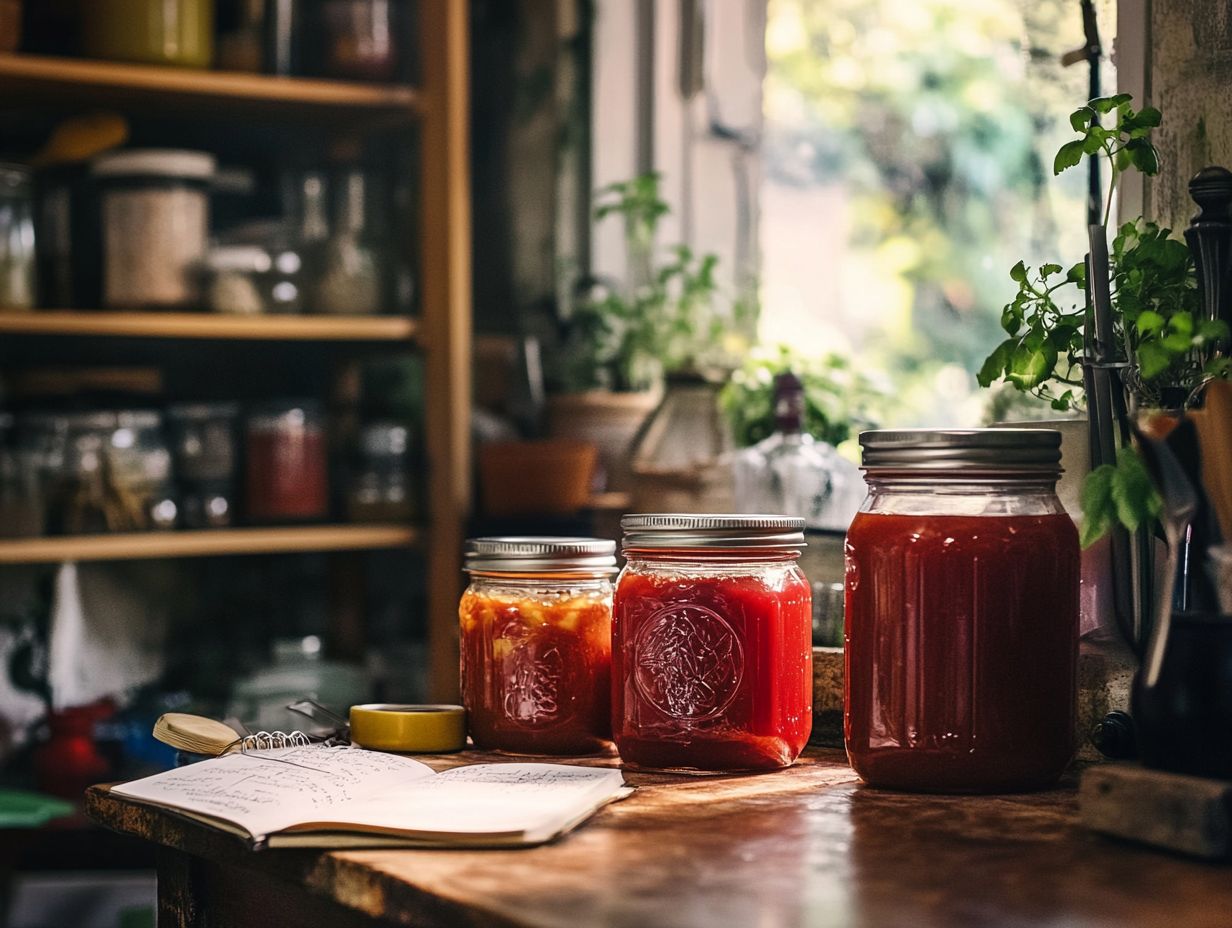
- Proper sealing is essential for food safety and freshness. Check for common causes like incorrect lid placement, damaged jars, or inadequate space between the food and the jar lid to ensure jars are sealed.
- Follow a step-by-step guide for sealing jars correctly. Ensure lids are clean and free of debris, and use proper canning methods for optimal sealing while paying attention to bubbles that may compromise the airtight seal.
- Environmental factors like temperature and altitude, as well as the quality of ingredients, can affect jar sealing. Utilize temperature adjustments to optimize your canning process.
Common Causes of Unsealed Jars
Canning is a beloved method for preserving food, but unsealed jars can pose significant safety risks and lead to spoilage. Understanding the common causes behind unsealed jars such as improper sealing techniques, inadequate jar cleaning, or poor-quality lids is crucial.
Factors such as improper sealing methods and inadequate jar cleaning can undermine the integrity of your airtight seal, vital for safe food preservation. If you’re involved in home canning, it s essential for you to recognize these pitfalls to ensure the safety and quality of your preserved delights, such as jams and pickles made with quality ingredients, while also minimizing the risk of foodborne illnesses like botulism.
Identifying the Issue
Identifying whether a jar is unsealed is a vital part of the canning process that can help you avoid food safety issues and ensure that your canned goods remain delicious.
To ensure your food stays safe for consumption, take a moment to examine the jar for any signs of damage. Inspect the glass for any nicks or cracks; these can compromise your seal. Next, inspect the lid for any bends or rust. This will give you a clearer picture of its condition and help you avoid potential failures.
Once you ve checked for physical damage, perform a vacuum seal test: gently press the center of the lid and listen for the characteristic ping sound that indicates a proper seal. If it pops back with a hollow sound, you ve got an unsealed jar on your hands, and it may require reprocessing.
By adhering to strict food safety standards, you can significantly reduce the risk of spoilage and foodborne illnesses, ensuring that your delicious home-canned creations remain safe to enjoy, whether stored in the fridge or at room temperature.
How to Properly Seal Jars
Sealing jars correctly is a vital step in the canning process that guarantees the longevity and safety of your preserved foods, protecting them from spoilage. To achieve that perfect seal, you’ll want to adopt a systematic approach that includes checking the quality of your jars and lids.
Start by selecting high-quality jars and lids, ensuring you maintain the appropriate space between the food and the jar lid necessary for effective sealing. It s also essential to apply the right sealing methods whether that s a boiling water bath or pressure canning depending on what you re preserving.
These techniques not only secure the airtight seal but also inhibit the growth of harmful bacteria, ensuring that your food remains safe and delicious for the long haul, allowing you to enjoy your home canning efforts.
Now that you know the secrets to sealing jars, get ready to preserve your favorite foods safely!
Step-by-Step Guide
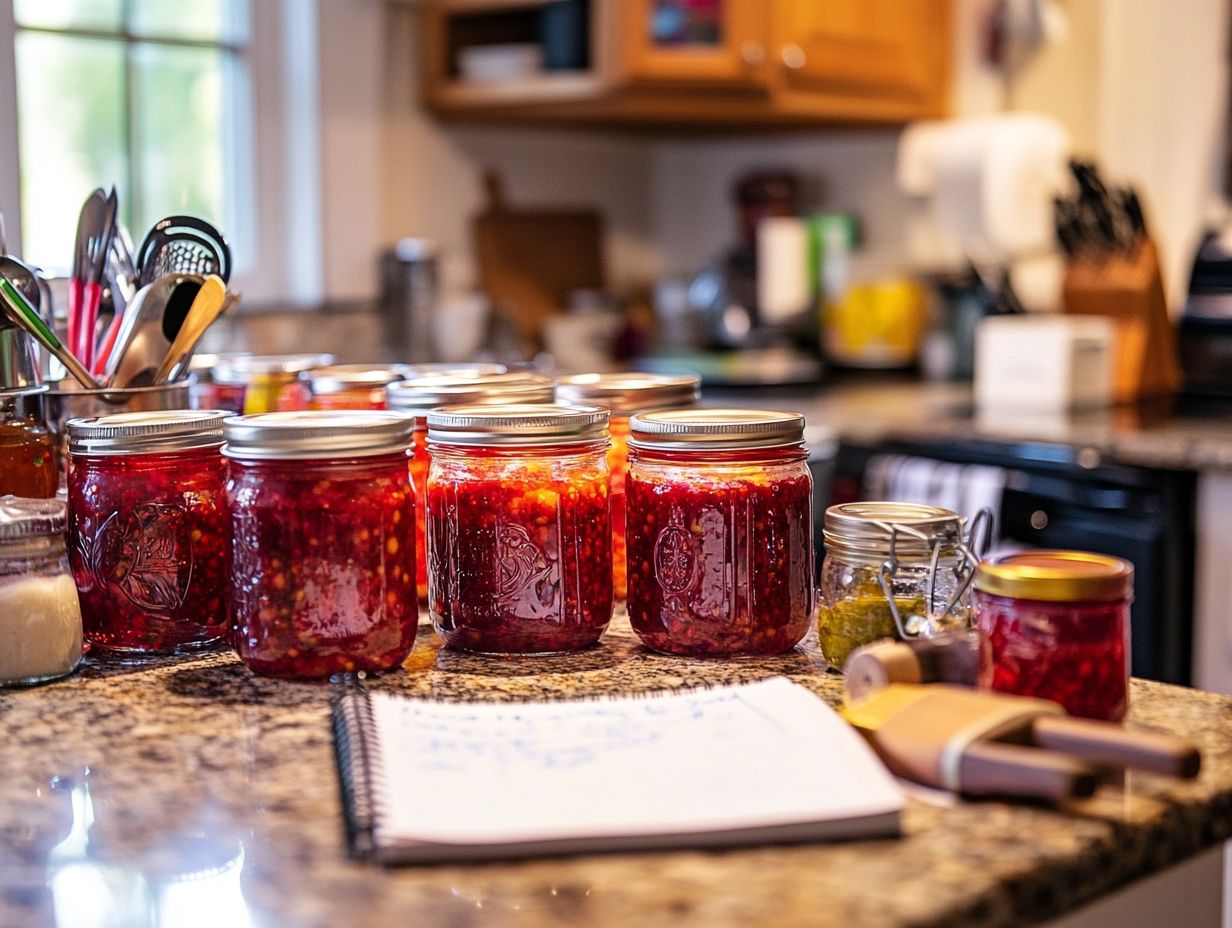
This step-by-step guide will navigate you through the essential processes for properly sealing jars during home canning. This ensures you follow the best practices for food safety.
From selecting the right type of jars to understanding the significance of temperature adjustments and the space left at the top, there are several key factors to keep in mind. Before you dive into canning, it s vital to prepare your jars by ensuring they are clean and sterilized. This step is crucial in eliminating any bacteria that could spoil your delicious contents, such as jams and pickles.
As you fill the jars, pay close attention to the space left in the jar at the top aim for about inch from the rim. This space is important for the natural expansion of the contents during processing and to avoid the formation of air bubbles. After filling, adjust the temperature according to the specific canning method you re using, whether it s a water bath or a pressure canner. This is pivotal for effective sealing and maintaining food quality.
Once the jars are sealed, let them cool at room temperature. This ensures proper vacuum sealing. Checking for a proper vacuum seal afterward keeps your food safely preserved for delightful future enjoyment.
Factors That Can Affect Jar Sealing
Several factors can greatly influence the sealing effectiveness of jars during the canning process. This directly affects both the quality and safety of your preserved foods, including jams and pickles.
Environmental elements such as humidity and temperature play a crucial role in altering sealing conditions, impacting food safety. The quality of your ingredients also matters when ensuring the safety and success of your canning efforts.
By understanding these variables, you can ensure that your home canning endeavors lead to safe and delicious results. Whether you’re crafting jams or pickles, your family will love them.
Environmental Factors
Environmental factors play a crucial role in the canning process. They influence how well your food seals and how effectively it s preserved for long-term storage.
Fluctuations in temperature can cause the contents of your jars to expand and contract. This could jeopardize that all-important airtight seal. It’s necessary to monitor the canning process closely. High humidity levels can also lead to moisture buildup, potentially fostering mold growth or spoilage. This puts food safety at risk and affects food quality.
Seal your jars under the right environmental conditions. Improper sealing can allow bacteria to sneak in, ultimately leading to spoilage and potential health hazards.
By maintaining a controlled environment, you can ensure that your preservation methods meet food safety standards. This also extends the shelf life of your canned goods, allowing you to enjoy them for months.
Quality of Ingredients
The quality of ingredients you choose for canning profoundly impacts the safety and longevity of your preserved foods. This is especially true for jams and pickles made with fresh and ripe produce.
When selecting fruits or vegetables, pay close attention to ripeness, freshness, and source. These elements are crucial for achieving the best final product and ensuring food safety. Opting for high-quality, in-season ingredients elevates flavor and ensures that the natural acidity levels are just right. This is essential for preventing bacterial growth and ensuring the safety of your canned goods.
Thoroughly washing and trimming your produce minimizes contamination risks. Be cautious of any signs of spoilage, as they can jeopardize food safety, making your food unsafe to consume. Understanding the importance of pH levels, which measure how acidic a substance is, will help you make informed choices about additional ingredients like vinegar or sugar.
Thus, giving meticulous attention to ingredient selection is vital for producing safe and delicious preserved goods that everyone will enjoy.
Start your canning journey today for delicious homemade treats!
Troubleshooting Unsealed Jars
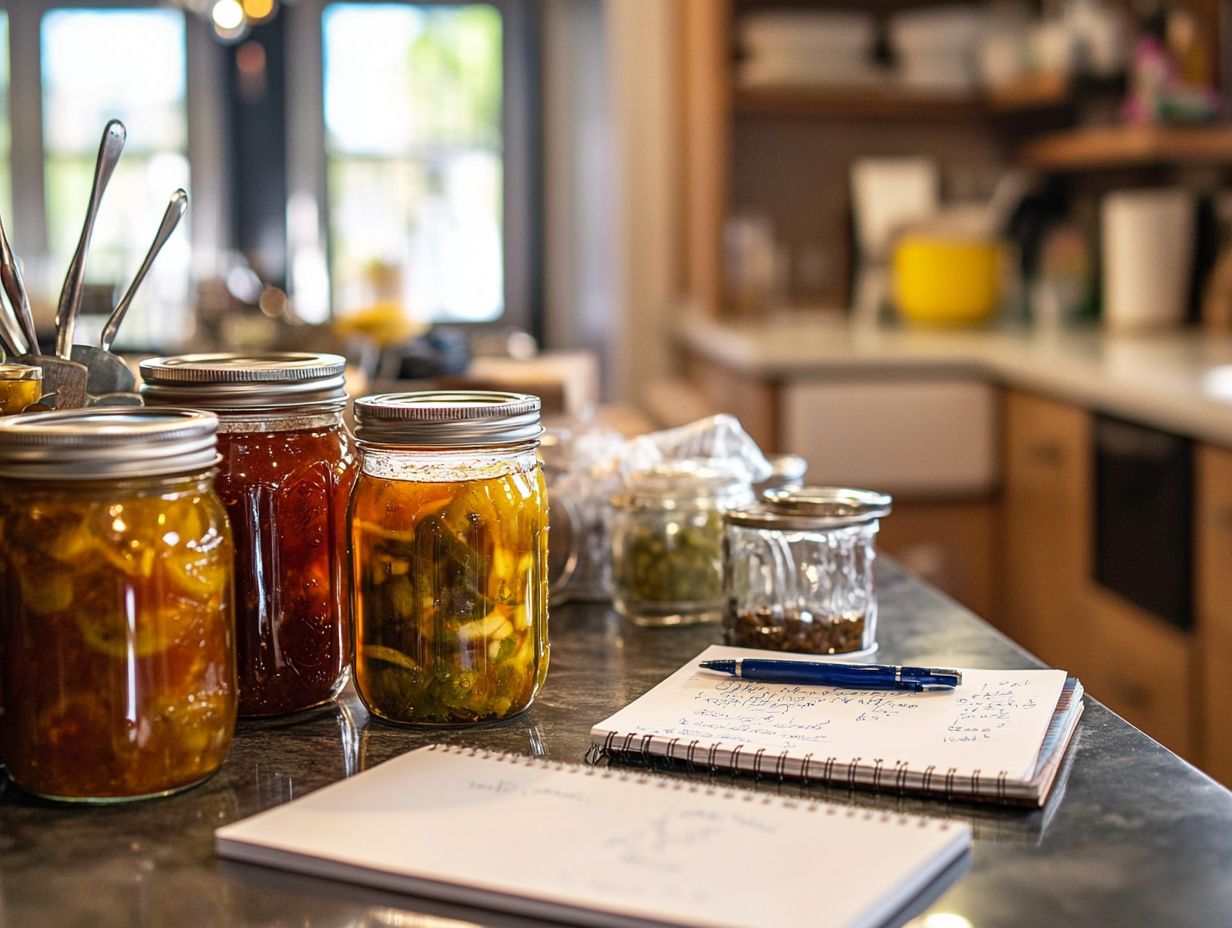
Troubleshooting unsealed jars is important for home canning. It ensures that your preservation efforts result in safe and consumable food that can be enjoyed by family and friends.
By identifying the reasons behind jar failures such as nicks and cracks in the glass or improper sealing techniques you can chart the best course of action to ensure safety. Understanding these issues is vital for upholding food quality in your canning practices.
Addressing Common Problems
Addressing common issues related to unsealed jars is vital for achieving successful canning. These challenges can profoundly impact the integrity of your preserved foods.
Recognizing problems such as improper sealing, air bubbles, and insufficient headspace can lead to potential safety hazards. If not addressed, these issues can jeopardize the quality of your stored foods and raise health concerns.
Understanding how to tackle these issues allows even beginners to achieve impressive results. You can enjoy the long-term rewards of producing safe and delicious foods.
Follow these best practices like checking seals after processing, selecting the appropriate jar size, and adhering to proper sterilization techniques. Doing so will significantly enhance your canning process, resulting in delightful preserved goods that are both delicious and safe to consume.
Preventing Unsealed Jars
Preventing unsealed jars during canning is essential for ensuring food safety. By adopting best practices like thoroughly cleaning and inspecting jars for nicks and cracks before use you can significantly reduce the risk of sealing failures.
Additionally, ensure that lids are securely applied to maintain food quality. Following a curated set of tips empowers you to preserve favorites like jams and pickles with confidence.
Tips for Ensuring Proper Sealing
Implementing specific tips can significantly enhance your canning efforts and ensure food safety. By understanding the essential elements of food safety and quality preservation, you can confidently embark on your canning journey.
One vital tip is to always use sterilized jars. This minimizes the risk of bacterial contamination and sets the stage for success. Selecting the right sealing lids in good condition is crucial for maintaining an airtight closure.
Leave the appropriate headspace in each jar, which is the space left at the top to allow for expansion during processing. Allow the jars to cool naturally before moving them to ensure that the seal forms correctly.
Frequently Asked Questions
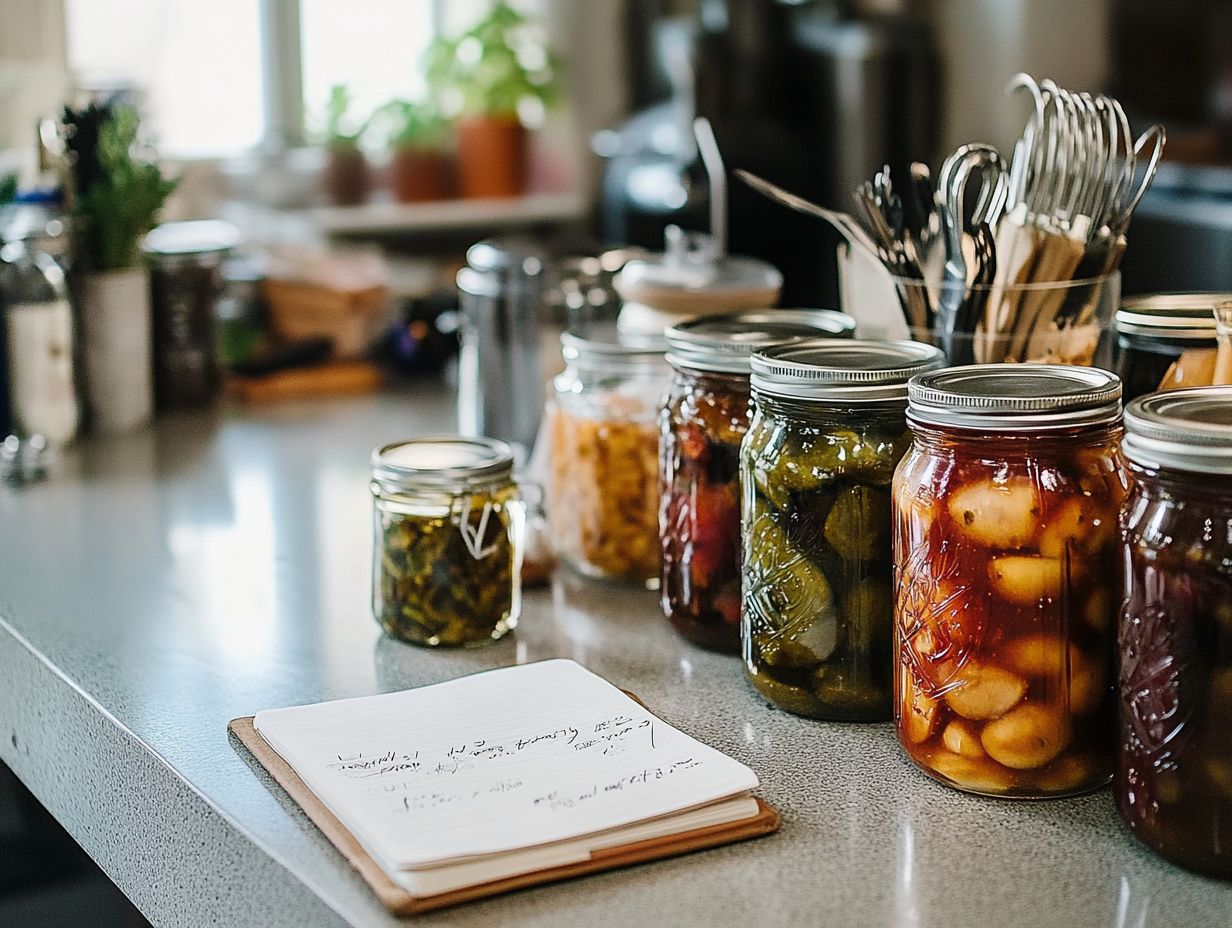
What to Check When Jars Don’t Seal?
When jars don’t seal, there are a few things you can check to troubleshoot the issue.
How can I tell if my jar is properly sealed?
To check if a jar is properly sealed, press down on the center of the lid. If it stays down and makes a popping sound when pressed, it is not properly sealed. A properly sealed jar lid will be firm and not move when pressed.
What could cause jars to not seal?
Jars may not seal properly for several reasons. It’s important to check for old lids, cracks, or a dirty rim. For more details on troubleshooting, see why some jars fail to seal properly. Always ensure the lid is tightened correctly.
How can I fix a jar that didn’t seal?
If a jar didn’t seal, you can reprocess it with a new lid. You can also store it in the fridge and enjoy the contents within a few days.
What should I look for when checking the jar for sealing issues?
When troubleshooting sealing issues, look for cracks, chips, or dents in the jar and lid. These can prevent a proper seal. Understanding why your canning jar is not sealing can also help you address these problems. The quality of lids is crucial for successful home canning and can help prevent botulism.
Can I still use a jar that didn’t seal?
If a jar doesn t seal, you can reprocess it or store it in the fridge for a few days. Discard it if you see mold or smell something off!

